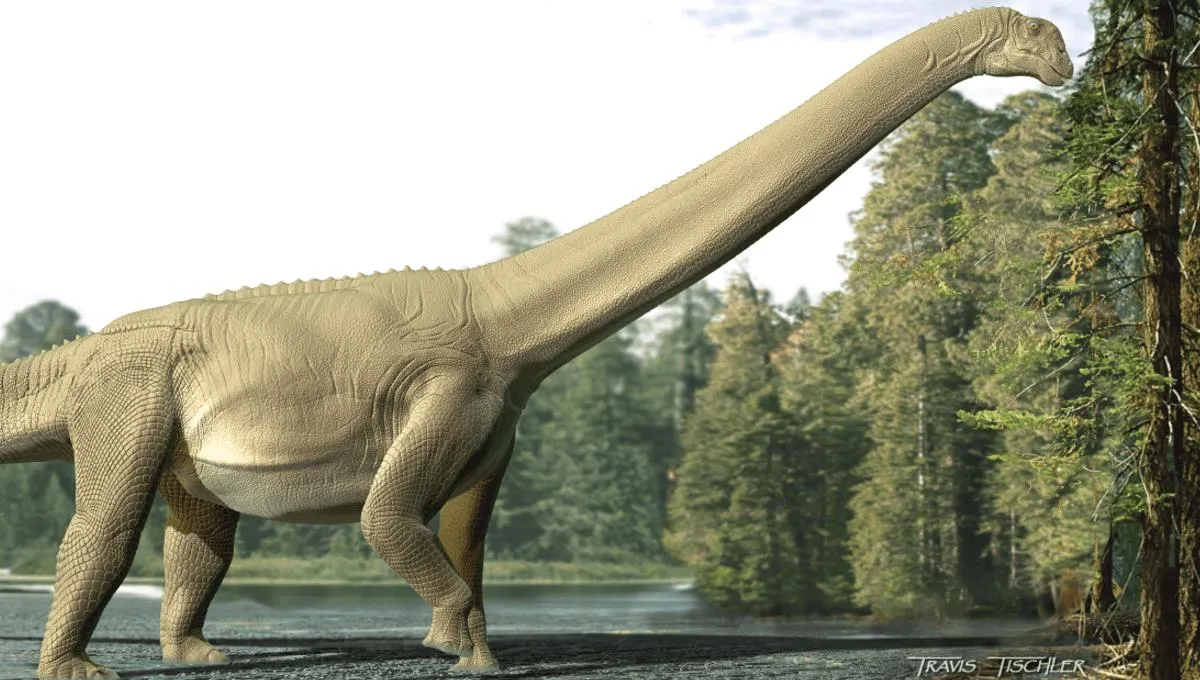
The recent discovery of fossilized stomach contents from a Diamantinasaurus matildae specimen has revealed fascinating insights into the diet and digestive processes of these ancient sauropods. Excavated in 2017 by dedicated staff and volunteers at the Australian Age of Dinosaurs Museum of Natural History, this specimen dates back between 94 and 101 million years, placing it firmly in the mid-Cretaceous period. The Winton Formation of Queensland, Australia, is renowned for its rich fossil record, and this near-complete specimen is a remarkable addition to our understanding of sauropod biology.
Among the notable features of this specimen was a mysterious lump of rock that turned out to be a cololite, a term used to describe preserved stomach contents. Upon closer inspection, researchers discovered multiple layers of plant fossils embedded within this cololite. This significant find is the first of its kind, marking a world-first discovery in the study of sauropods—an animal group known for its long geological history and extensive research.
The fossilized stomach contents revealed a diverse diet comprising conifers, seed-fern fruiting bodies, and angiosperm leaves. Analysis of these findings indicated that sauropods did not chew their food, relying instead on fermentation and the gut microbiome to break down plant matter. This method of digestion generates considerable heat, which prompts intriguing questions about the physiology of these massive dinosaurs.
According to Stephen Poropat, lead author and researcher from Curtin University, the significant heat produced during fermentation might have influenced the physical adaptations of sauropods. He suggested that their long necks and tails could have served to dissipate heat, much like the ears of an elephant, while also keeping their brains away from the “gastric furnace” of their digestive tracts.
This groundbreaking discovery provides a fresh perspective on how sauropods influenced their prehistoric environment throughout their lives. Poropat emphasized that it’s essential to consider these dinosaurs not just as formidable adults but as babies, juveniles, and subadults that significantly impacted their surroundings. “A horde of hatchlings would have been able to decimate tracts of low-growing plants pretty rapidly,” he noted.
As these young dinosaurs grew, they would have continued to exert pressure on the plant life around them. Even the few individuals that reached adulthood would contribute to the ecosystem by feeding at varying heights—whether at the tops of trees or lower vegetation—thereby shaping their environment as they grazed.
The research also highlights the ecological impact of sauropod feeding on plant life. Their feeding habits likely pressured plants to develop defenses, encouraging rapid regrowth or adaptations such as encapsulating seeds in fruits or pods. These evolutionary responses enabled plants to entice sauropods for seed dispersion as they roamed and defecated across their habitats.
In conclusion, the discovery of fossilized stomach contents from Diamantinasaurus matildae not only sheds light on the dietary habits of these giant dinosaurs but also emphasizes their role as ecosystem engineers throughout their lives. Understanding the interplay between sauropods and their environment offers valuable insights into the dynamics of prehistoric ecosystems.